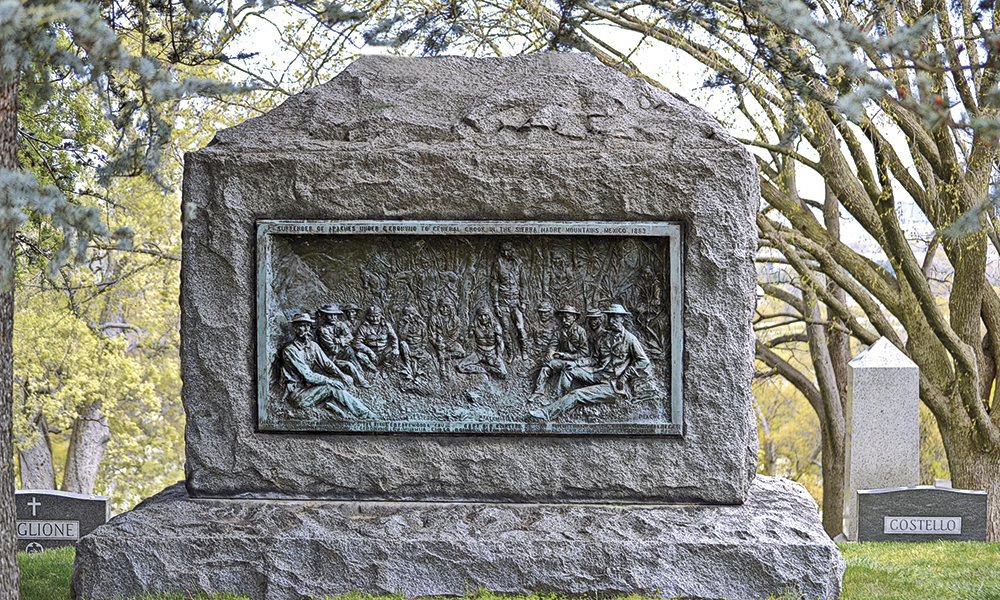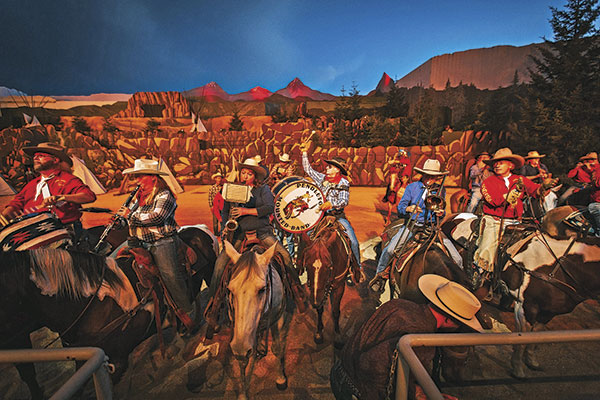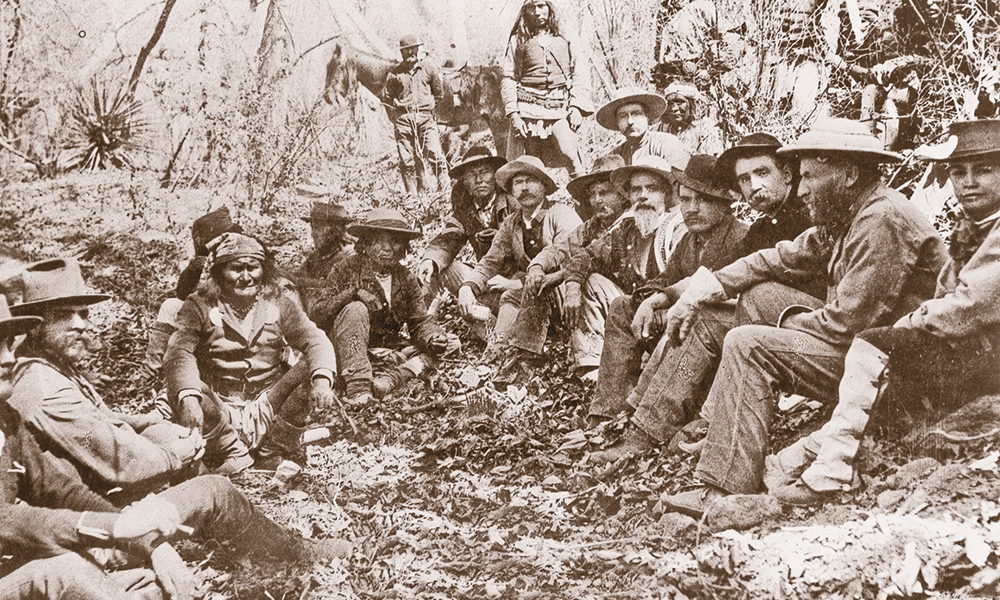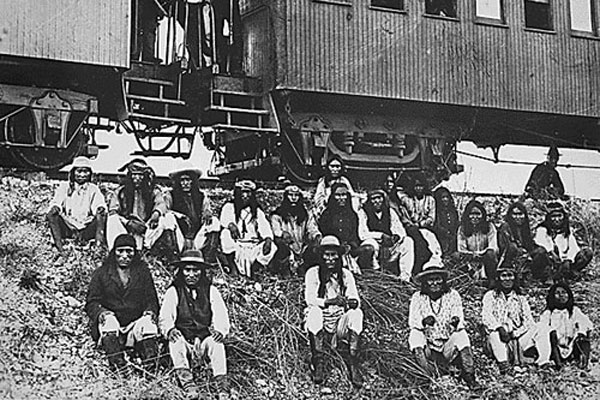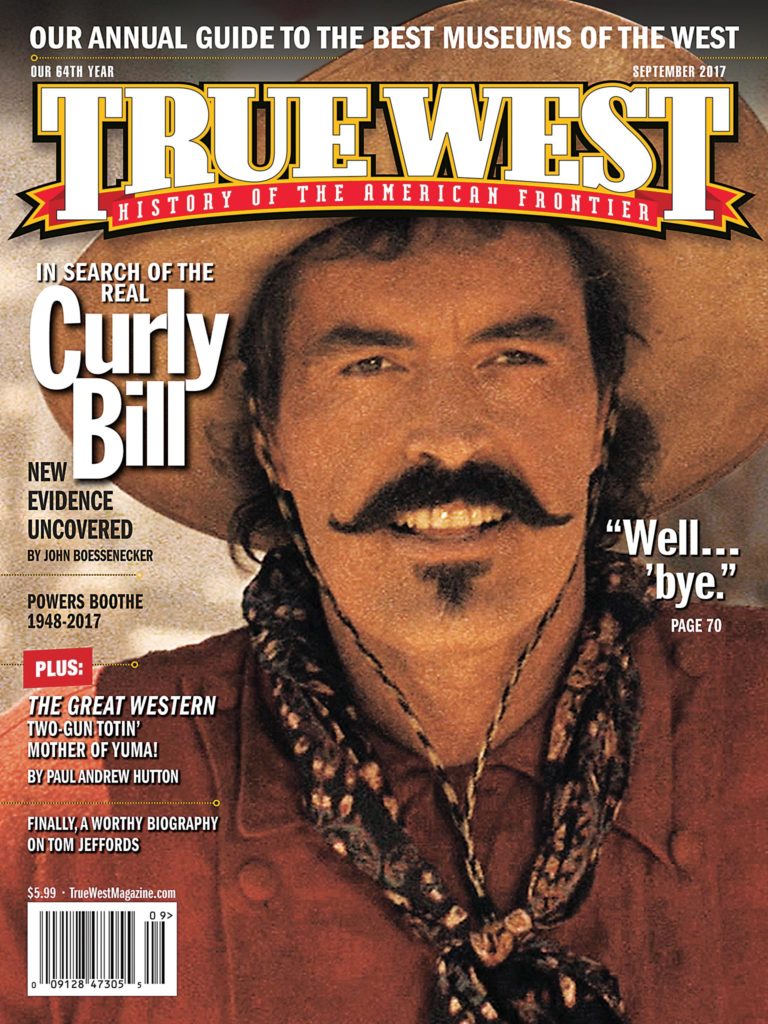General George Crook thoughtfully allowed photographer C.S. Fly to come along to record the event at Cañon de los Embudos for posterity. One of Fly’s dramatic photographs would inspire a reproduction of Crook’s conference with Geronimo in 1883, as a bronze bas relief on Crook’s tombstone in Arlington National Cemetery.
When Crook met with Apache leader Geronimo and his council on March 25, 1886, the general selected a shaded glade under a large sycamore and seated himself on a little ledge at the base of a knoll. This placed him above the Apaches. Geronimo sat cross-legged on the ground across from Crook. Nana sat next to Geronimo, and everyone began to gather around them.
The general wore a canvas jacket and overalls along with a cork pith helmet. Packmaster Henry Daly was impressed by how carefully Crook had braided his beard into two long strands. The general put on some style, although a bit eccentric even by frontier standards.
Just as everyone began to settle in, Chihuahua and Ulzanna made a noisy arrival. They galloped through the packer’s camp and dismounted at the glade. Crook warmly greeted Chihuahua, and then everyone posed for the camera. The careful photographer even moved several of the Apaches. Tom Horn and Al Sieber were both there, but could not quite squeeze in enough to be in Fly’s photograph.
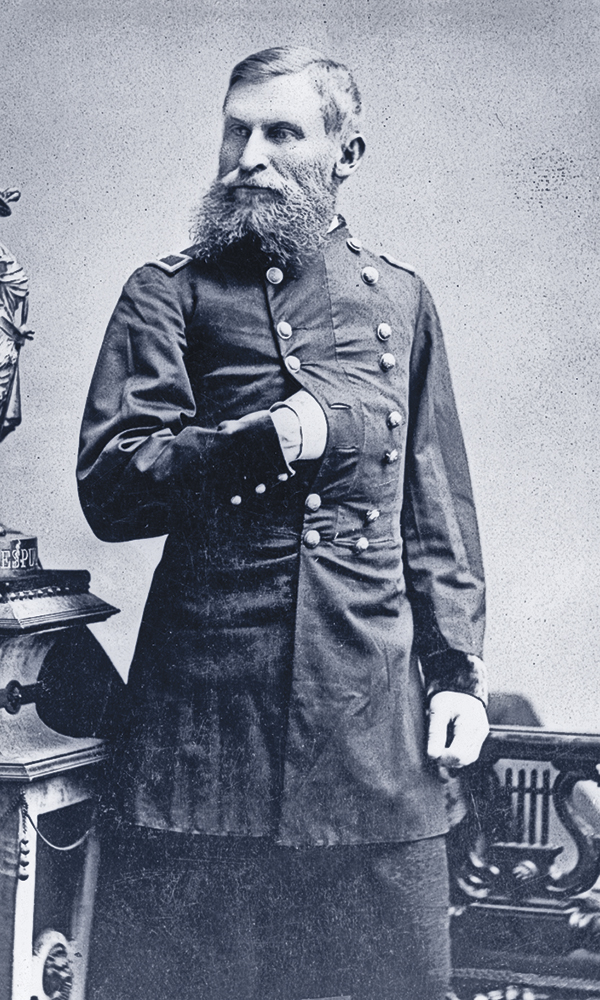
– True West Archives –
The morning after, Capt. John Bourke followed Fly over to Geronimo’s camp. Bourke felt Fly was acting a “damned fool for going into the camp and that he’d never come out.”
The captain underestimated his man, for Fly, whose Tombstone studio in Arizona Territory was adjacent to the O.K. Corral, was not easily intimidated. The Apaches proved quite agreeable to being photographed. Bourke was amazed at how Fly, with “nerve that would have reflected undying glory on a Chicago drummer, coolly asked Geronimo and the warriors with him to change positions, and turn their heads or faces, to improve the negative.”
The end result was a series of remarkable photographs that represent the only known images of Indians still at war.
A Distinguished Professor of History at the University of New Mexico, Paul Andrew Hutton won the Western Writers of America Spur for his most recent book, The Apache Wars: The Hunt for Geronimo, the Apache kid, and the Captive Boy Who Started the Longest War in American History.

